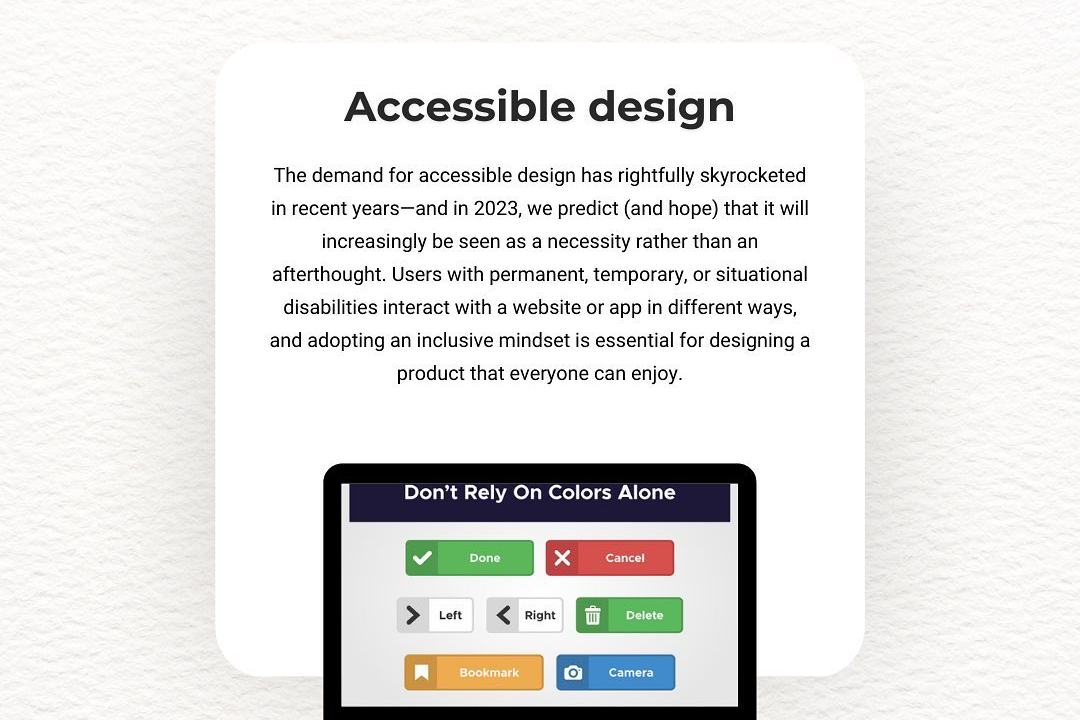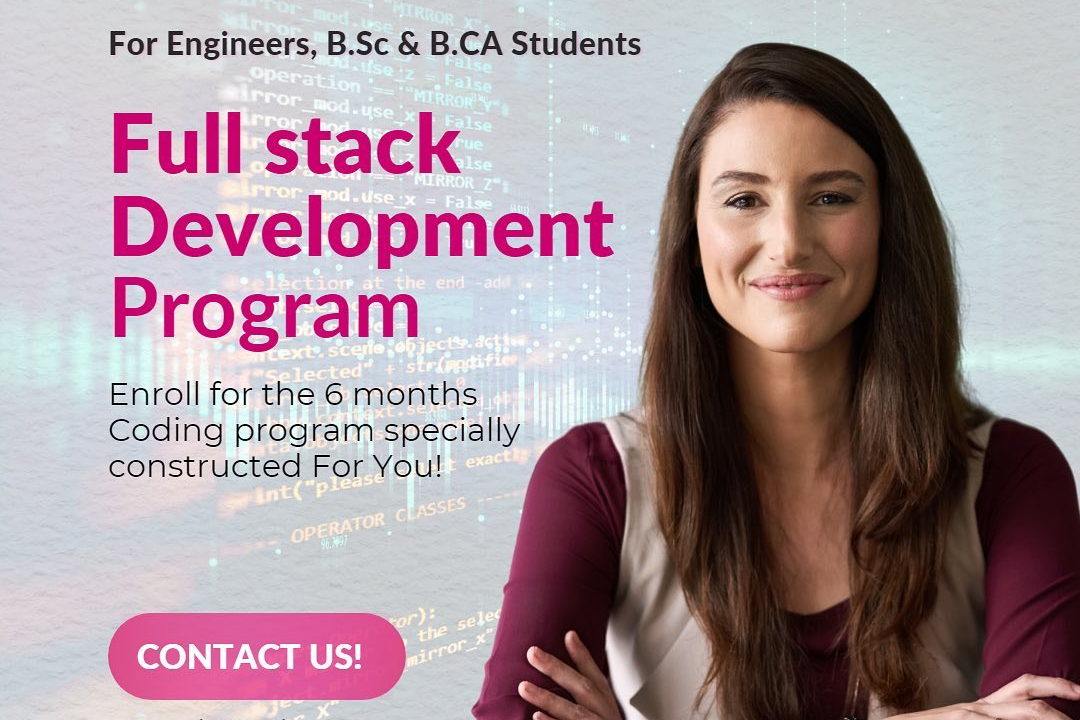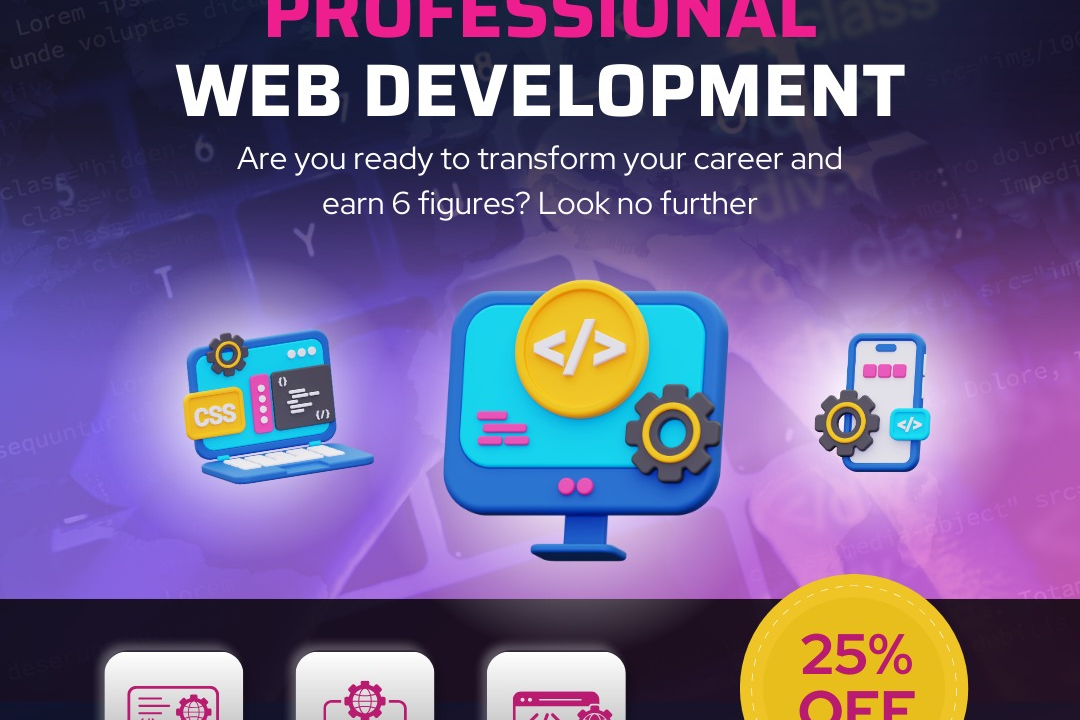Laravel Interview Questions And Answer
Essential Laravel Interview Questions and Answers for Job Seekers
Laravel Interview Questions And Answer
Laravel interview questions are essential for both interviewers and candidates, as they help assess knowledge and skills related to one of the most popular PHP frameworks. These questions typically cover various aspects of Laravel, including its architecture, routing, middleware, authentication, and database management, allowing candidates to demonstrate their proficiency in building robust web applications. Familiarity with these questions not only enables candidates to prepare effectively for interviews but also showcases their understanding of best practices in web development and object-oriented programming. As Laravel continues to gain momentum in the industry, mastering its concepts through interview preparation can significantly enhance a developer's job prospects and career growth in the competitive tech landscape.
To Download Our Brochure: https://www.justacademy.co/download-brochure-for-free
Message us for more information: +91 9987184296
Laravel Interview Questions and Answers
1 - What is Laravel?
Laravel is a free, open source PHP framework designed for web application development following the MVC (Model View Controller) architectural pattern, which provides developers with tools and resources to build high performance and secure applications efficiently.
2) What are the key features of Laravel?
Key features of Laravel include Eloquent ORM for database management, Blade templating engine for dynamic view rendering, built in routing, middleware for filtering HTTP requests, a robust authentication system, and powerful tools for testing and task scheduling.
3) What is routing in Laravel?
Routing in Laravel is the process of defining routes in the web.php file, allowing developers to map URL requests to corresponding controller actions, enabling the separation of application logic and URL handling for cleaner code.
4) What are Middleware in Laravel?
Middleware in Laravel provides a mechanism to filter HTTP requests entering your application. It allows developers to add functionalities such as authentication, CORS, and logging by wrapping request handling logic that processes the request before it reaches the intended controller.
5) Explain Eloquent ORM.
Eloquent ORM (Object Relational Mapping) is Laravel's built in database abstraction layer that simplifies database communication, allowing developers to interact with their database using an expressive syntax, which helps in managing relationships between tables effortlessly.
6) What are migrations in Laravel?
Migrations in Laravel are version controlled files that allow developers to manage and create database schema changes in a systematic way, making it easy to share changes in database structures across different development environments.
7) How does Laravel handle authentication?
Laravel provides a built in authentication system that includes features like user registration, login, password reset, and email verification. Developers can easily implement this functionality using the artisan command to scaffold the necessary views and controllers.
8) What is the purpose of Artisan in Laravel?
Artisan is the command line interface (CLI) tool included with Laravel that provides various commands to automate repetitive tasks like database migrations, running tests, generating boilerplate code, and managing application configurations.
9) What is Laravel Blade?
Blade is Laravel's lightweight and powerful templating engine that allows developers to create dynamic and reusable view templates using simple PHP syntax. It supports template inheritance, sections, and clean integration with PHP logic.
10) Explain Service Providers in Laravel.
Service providers are central to the bootstrapping of a Laravel application; they are responsible for binding classes into the service container and performing any necessary configuration or setup for different components of the application.
11 - What are Laravel Policies?
Laravel Policies offer a clean way to authorize user actions, containing logical rules that define what actions a user can perform on a given model, enabling role based access control in an elegant manner.
12) What is a Laravel Controller?
Controllers in Laravel are responsible for handling requests and returning responses, serving as a boundary between the application’s logic and the HTTP layer. They help to organize code by grouping related request handling around a particular resource.
13) How do you implement validation in Laravel?
Validation in Laravel can be implemented using the built in validation tools in the request classes, allowing developers to define rules for incoming data and handle response messages when validation fails seamlessly.
14) Describe Laravel's Event and Listener system.
Laravel’s Event and Listener system allows you to subscribe and listen for events that happen in your application. This decouples the code, enabling better organization by separating the event triggering from response handling, thus promoting cleaner architecture.
15) What is the purpose of configuration files in Laravel?
Configuration files in Laravel are stored in the `config` directory and allow developers to manage application settings, such as database connections, caching, and mail services, in a centralized manner, promoting ease of maintenance and updates.
These questions and answers can serve as an excellent resource for both interview preparation and understanding the foundational concepts of Laravel for web development.
Additional Laravel Interview Questions and Answers
16) What are the different types of relationships in Eloquent ORM?
Eloquent ORM supports several types of relationships including:
One to One: A relationship where one model is associated with one other model.
One to Many: A relationship where one model is associated with multiple instances of another model.
Many to Many: A relationship where multiple instances of a model can be associated with multiple instances of another model.
Has Many Through: A relationship that allows a model to access data through another related model.
Polymorphic Relationships: A relationship that allows a model to belong to multiple other models on a single association.
17) What are Laravel Seeds?
Laravel Seeds are classes that allow developers to populate the database with test data or initial data using a fluent syntax. This is useful for testing and development purposes, enabling developers to quickly set up a database.
18) What is the purpose of CSRF protection in Laravel?
CSRF (Cross Site Request Forgery) protection in Laravel is implemented to prevent unauthorized commands from being transmitted from a user that the web application trusts. Laravel automatically generates a CSRF token for each session, which must be included with every POST request to ensure its validity.
19) How do you perform caching in Laravel?
Laravel provides a unified API for various caching systems, allowing developers to store and retrieve data under different cache drivers like file, database, Memcached, and Redis. Caching is beneficial for optimizing performance by storing frequently accessed data.
20) Explain the concept of Dependency Injection in Laravel.
Dependency Injection in Laravel is a design pattern that allows the automatic resolution of class dependencies through the constructor (or method) of a class, promoting loose coupling and enhancing code maintainability and testability.
21 - What is Laravel Homestead?
Laravel Homestead is an official, pre packaged Vagrant box that provides a local development environment tailored for Laravel applications. It includes popular tools and databases, ensuring an efficient setup for developers.
22) How do you handle file uploads in Laravel?
File uploads in Laravel can be handled using the `Storage` facade, which provides methods for storing uploaded files in various filesystems like local or cloud storage. Validation rules can be applied to manage file types and sizes.
23) What are Form Requests in Laravel?
Form Requests in Laravel are custom request classes that encapsulate validation logic and authorize access for incoming HTTP requests. They help keep controllers clean and focused on business logic, allowing for better organization of validation and authorization rules.
24) What is the purpose of the .env file?
The `.env` (environment) file in Laravel is used to store environment specific configuration settings such as database credentials, API keys, and application settings. This helps in managing configurations without hardcoding sensitive information in the code base.
25) How does Laravel handle queues?
Laravel queues provide a unified API for various queue backends, allowing jobs to be deferred and executed asynchronously. This helps improve application performance by processing time consuming tasks, such as sending emails or generating reports, in the background.
26) What are Artisan commands and how do you create a custom command?
Artisan commands are console commands that can be executed through the command line in Laravel. Developers can create custom commands by using the `make:command` Artisan command, allowing for the automation of repetitive tasks.
27) Explain the difference between `has()` and `with()` in Eloquent relationships.
The `has()` method is used to filter results based on the existence of a relationship, often in the query builder. The `with()` method, on the other hand, is used to eager load relationships, minimizing the number of database queries executed.
28) What are Laravel Events and when would you use them?
Laravel Events provide a simple observer implementation to implement the observer pattern. Events are useful for decoupling parts of your application; you can fire events when an action occurs (such as creating a user) and have listeners respond to those events (such as sending a welcome email).
29) What is the use of `Route::resource()` in Laravel?
The `Route::resource()` method in Laravel is a simple way to create a standard set of RESTful routes for a controller, automatically mapping the routes corresponding to common actions like index, create, store, show, edit, update, and destroy.
30) How to implement localization in Laravel?
Localization in Laravel allows developers to manage multiple languages for an application. This can be done through language files in the `resources/lang` directory, providing an easy way to manage translations of strings based on user preferences or settings.
These additional points provide an in depth understanding of Laravel concepts, enhancing your familiarity and preparedness for discussions and interviews related to this powerful PHP framework.
Course Overview
The “Laravel Interview Questions and Answers” course provides a comprehensive overview of essential concepts and common queries related to Laravel, one of the most popular PHP frameworks. Designed for aspiring developers and those preparing for job interviews, this course covers key topics such as Eloquent ORM relationships, middleware, routing, authentication, and best practices in application development. Participants will gain practical insights through real-time projects and hands-on examples, enabling them to confidently navigate technical discussions and demonstrate their expertise in Laravel during interviews. By the end of the course, learners will be well-equipped with the knowledge and skills necessary to excel in Laravel-related roles.
Course Description
The “Laravel Interview Questions and Answers” course is designed to prepare learners for technical interviews focused on Laravel, a leading PHP framework. This course offers an in-depth exploration of critical concepts, common interview questions, and practical scenarios, helping participants build a solid foundational understanding of Laravel fundamentals such as routing, middleware, Eloquent ORM, and authentication. Through real-time projects and interactive discussions, learners will enhance their problem-solving skills and gain the confidence needed to articulate their knowledge effectively. By mastering the intricacies of Laravel, participants will be well-prepared to tackle interview challenges and stand out in competitive job markets.
Key Features
1 - Comprehensive Tool Coverage: Provides hands-on training with a range of industry-standard testing tools, including Selenium, JIRA, LoadRunner, and TestRail.
2) Practical Exercises: Features real-world exercises and case studies to apply tools in various testing scenarios.
3) Interactive Learning: Includes interactive sessions with industry experts for personalized feedback and guidance.
4) Detailed Tutorials: Offers extensive tutorials and documentation on tool functionalities and best practices.
5) Advanced Techniques: Covers both fundamental and advanced techniques for using testing tools effectively.
6) Data Visualization: Integrates tools for visualizing test metrics and results, enhancing data interpretation and decision-making.
7) Tool Integration: Teaches how to integrate testing tools into the software development lifecycle for streamlined workflows.
8) Project-Based Learning: Focuses on project-based learning to build practical skills and create a portfolio of completed tasks.
9) Career Support: Provides resources and support for applying learned skills to real-world job scenarios, including resume building and interview preparation.
10) Up-to-Date Content: Ensures that course materials reflect the latest industry standards and tool updates.
Benefits of taking our course
Functional Tools
1 - Laravel Framework
The primary tool utilized in the course is the Laravel framework itself. Known for its elegant syntax and robust features, Laravel simplifies common tasks such as routing, authentication, and caching. Learners will dive deep into its architecture, understanding how to leverage its capabilities for building high quality applications. By mastering Laravel, students can efficiently organize their code and create scalable, maintainable web applications that meet industry standards.
2) Composer
Composer is a dependency manager for PHP that plays an essential role in Laravel development. The course covers how to install and manage Laravel packages using Composer, enabling students to integrate various libraries and tools into their projects seamlessly. Understanding Composer is crucial for maintaining project dependencies and ensuring that applications are up to date with the latest features and security patches.
3) PHP and MySQL
The course emphasizes proficiency in PHP and MySQL, the foundational technologies used in Laravel applications. Students will learn how to write effective PHP code and utilize MySQL for database management. This knowledge is critical for back end development, allowing learners to create dynamic, data driven applications while effectively querying and manipulating databases.
4) Version Control with Git
Version control is a vital skill for developers, and the course incorporates Git as a primary version control system. Learners will understand the importance of tracking changes in code, collaborating with others, and managing project histories. Mastering Git enables students to work efficiently within teams and protects against code loss, making it easier to revert to previous versions when necessary.
5) Integrated Development Environment (IDE)
Students will be familiarized with popular IDEs such as PhpStorm and Visual Studio Code, which provide powerful features for PHP development. The course highlights how to set up and configure these IDEs for Laravel projects, enhancing productivity through features like code debugging, syntax highlighting, and intelligent code completion. An effective IDE facilitates a smoother coding experience, helping students write better code more efficiently.
6) Testing Tools
Quality assurance is a significant aspect of software development, and the course introduces various testing tools available within the Laravel framework. Students will learn how to write unit tests and feature tests using PHPUnit, ensuring that their applications function as intended. This understanding of testing not only helps in maintaining code quality but also boosts confidence in deploying applications that are reliable and robust.
7) API Development Tools
As modern web applications often require seamless communication with other systems, the course covers tools for developing RESTful APIs within Laravel. Students will learn how to create, test, and document APIs using Postman and Laravel's built in tools. Understanding API development is crucial for building applications that integrate with third party services and enhance functionality, making developers more versatile in today's job market.
8) Front end Integration Tools
While Laravel is primarily a back end framework, integrating front end technologies is essential for creating cohesive applications. The course discusses tools like Blade templating, Vue.js, and Laravel Mix for managing front end assets. Students will gain hands on experience in combining back end and front end technologies, enabling them to create comprehensive full stack applications that provide engaging user experiences.
These tools and technologies form the backbone of the Laravel Interview Questions and Answers course, equipping students with the necessary skills and knowledge to excel in the field of web development. By gaining proficiency in these areas, learners are well prepared to tackle real world challenges in their careers.
Certainly! Here are additional tools and technologies often covered in the Laravel course at JustAcademy, enhancing the learning experience and empowering students with comprehensive skills for web development:
9) Homestead
Laravel Homestead is an official, pre packaged Vagrant box that provides a local development environment. The course covers how to set up Homestead to streamline the development process, ensuring that students can easily manage configurations and dependencies without needing a complex local setup. Using Homestead allows learners to work in an environment that closely mimics production, reducing the chances of discrepancies between development and live applications.
10) Artisan CLI
Artisan is Laravel's command line interface, providing a suite of commands that aid in application development. Students will explore various Artisan commands to automate common tasks such as database migrations, seeding, generating boilerplate code, and running tests. Mastering Artisan enhances productivity and allows developers to perform complex tasks with minimal effort.
11 - Database Migrations and Seeders
The course delves into the concepts of database migrations and seeders, which are essential for managing database schemas. Students learn how to create, modify, and roll back database tables using migrations. Additionally, seeders are covered to help populate the database with sample data, facilitating testing and development. This knowledge is vital for maintaining organized and version controlled database structures.
12) Middleware
Middleware in Laravel provides a convenient mechanism for filtering HTTP requests entering the application. The course covers how to create and implement custom middleware for tasks such as user authentication and logging. Understanding middleware is crucial for enhancing application security and managing various aspects of the request/response lifecycle effectively.
13) Blade Templating Engine
Laravel’s Blade templating engine allows developers to work with dynamic content in their views effortlessly. Students will learn how to create and manage views using Blade, understanding its powerful features, such as template inheritance, control structures, and custom directives. This knowledge enables developers to build clean, maintainable, and organized front end code within their Laravel applications.
14) Laravel Echo
For real time event broadcasting, Laravel Echo serves as a powerful tool that works seamlessly with Laravel's broadcasting capabilities. Students will learn how to implement real time functionalities such as notifications and chat applications by leveraging Echo alongside libraries such as Pusher or Laravel WebSockets. Understanding real time communication enhances the interactivity of web applications and enriches user experiences.
15) Queue Management
Laravel queues provide a mechanism to defer the processing of time consuming tasks, such as sending emails or processing uploads. The course discusses how to implement queues, manage job processing, and scale applications effectively. Students will learn to use Laravel's built in queue system, which can improve application performance and ensure a smoother user experience by offloading heavy tasks.
16) Laravel Sanctum and Passport
For API authentication, Laravel offers Sanctum and Passport. Students will learn how to secure their APIs using these packages, implementing token based authentication systems. This knowledge is essential for ensuring that sensitive data is protected and that applications can securely manage user sessions across different platforms, such as web and mobile.
17) Deployment Tools
The course also covers best practices for deploying Laravel applications to production environments. Students will learn about various deployment tools and strategies, such as Forge, Envoyer, and CI/CD pipelines. Understanding how to deploy applications effectively is critical for providing stable, accessible, and reliable web services to end users.
18) Monitoring and Performance Tools
An overview of performance monitoring and logging tools like Laravel Telescope and Sentry is included in the curriculum. Students will learn how to monitor application performance, troubleshoot issues, and log errors, ensuring optimal application behavior. This knowledge is vital for maintaining high quality web applications in production environments.
19) Localization and Internationalization
The course dives into concepts of localization and internationalization, enabling students to build applications that cater to diverse audiences. Learners will explore how to utilize Laravel's built in localization features to manage translations and currency formats, ensuring that applications can support multiple languages and regions without significant restructuring.
By incorporating these tools into the curriculum, JustAcademy prepares students to tackle a wide range of real world web development challenges. This comprehensive approach equips learners with both foundational and advanced skills, making them well rounded candidates in the job market.
Browse our course links : https://www.justacademy.co/all-courses
To Join our FREE DEMO Session: Click Here
This information is sourced from JustAcademy
Contact Info:
Roshan Chaturvedi
Message us on Whatsapp: +91 9987184296
Email id: info@justacademy.co
Socket Io Interview Question
Laravel Interview Questions And Answers For Freshers
Ios Interview Questions For 2 Year Experience











